If you have seen a Friesian, Andalusian or Lipizzaner perform in classical movements, chances are you have seen one of these saddles in action.
They look as ancient and regal as the breeds that carry them and they add something to the presentation. But for most us, that is the extent of our knowledge on this ancient piece of tack.
Melissa Fischbach of The Baroque Horse Store (check out their amazing tack and accessories!) answered our questions about this beautiful saddle.
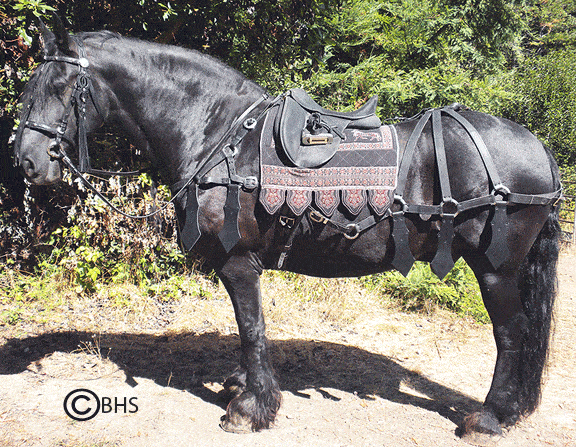
Where did this style of saddle originally come from?
MF: There are different versions of Baroque saddles, and that term is actually misleading. I would actually call them Traditional saddles, used on native baroque type horses.
Today, what disciplines use a baroque saddle?
MF: As Traditional/Baroque saddles, the designs come from as far back as the 13th Century and possibly before. They have developed over time. Probably the most common saddles that are used today and referred to as “Baroque Saddles” are as follows:
The Portuguese Presentation saddle, traditionally and still used today by mounted Portuguese bullfighters.
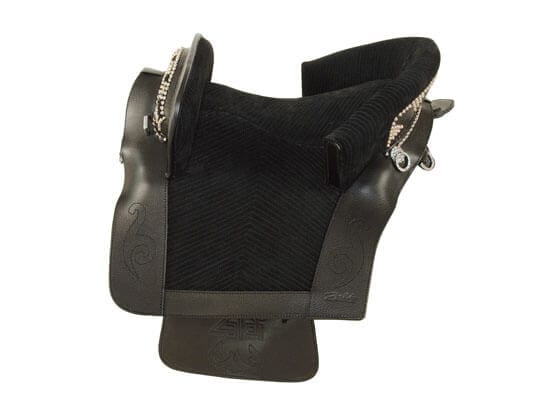
The Alta Escula or “High school” saddle, traditionally and still used today by both The Royal Andalusian School of Equestrian Art ( Real Escuela Andaluza del Arte Ecuestre) in Spain and the Spanish Riding School in Vienna.

The Doma Vaquero saddle, a traditional Spanish cowboy or Vaquero saddle used today in Spain. France and Italy also have their own variants of traditional saddles.
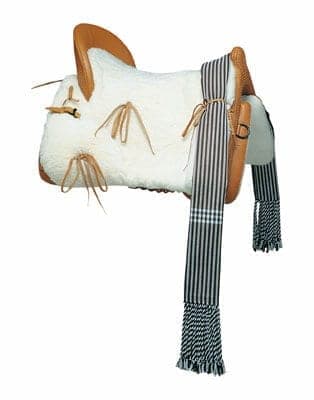
Editor’s note: It is interesting that this saddle has come to be called “Baroque,” since this term is used to describe items with characteristics similar to those in the prevalent in the 17th century, much later than when the saddle first appeared, according to Fischbach. Most likely, the term was ascribed to the saddle because of its ornate appearance – many of them having intricate designs – and not because it came from the Baroque period.
Are there any advantages of using a baroque saddle over another type?
MF: I would not say there is an advantage over other saddles, but sometimes in the case of a baroque type horse having a different back shape, sometimes a saddle with long tradition of having been built for a specific breed type, might be a better match.
In terms of comfortable, how comfortable are they? Are any of the good for a long trail ride compared to say an Aussie or a Western saddle?
MF: The three saddles I mentioned all ride differently. As they were each designed and built for different uses.
The Portuguese presentation saddles pommel and cantle come down much further on each side than any other saddle out there and the real ones can really lock your legs in. Again we go back to traditional function, the bull riders to not want to come off the horse. Today's riders might find their inability to easily get off or out of the saddle a little disconcerting on one hand and on the other someone with a poor seat or a hot horse might like that feature, I would not recommend it for trail riding.
The Alta Escula, is more like a combo Dressage/Jumping saddle. It is traditionaly used in the riding schools for the dressage/flat work and for the 'Airs about the ground' work - lavades, corbettes, capreioles It allows for more freedom of movement for the rider and horse and has some smaller knee rolls, for the jumping and leaping of the airs above ground. Again not for trail riding.

The Doma Vaquero saddle is used by the Spanish vaqueros, to herd cattle and is your basic everyday saddle in Spain. This saddle of the three is the most comfortable and could be used for trail riding.
Do they fit any horse type?
MF: Most are custom fitted to the horse, so yes.
Who uses these saddles today?
MF: These Saddles today are generally used by people that want to stay Traditional to their specific breeds and riding styles.
They are seen in Hollywood movies, and used for costume classes, parades, reenactments and exhibitions. A baroque/traditional saddle offers many variations to choose from and each has it own historical foundation.
Are they generally accepted in the show ring?
MF: Not in North America, some breed shows offer 'Traditional' classes, or ridden tests etc. where you can dress the horse in its native attire.
These saddles are definitely worth checking out, especially if you own one of the breeds that traditionally wore them. But be prepared for questions about your saddle from other curious riders, Fischbach said. But don’t let that dissuade you – her store motto is “Dare to be Different.”
“So go ahead and dare, next time you’re at a trade show and you see these saddles, sit in them, ask about them,” she said.
Horse Courses by Elaine Heney
- Listening to the Horse - The Documentary by Elaine Heney & Grey Pony Films
- Shoulder In & Out Training for better balance, bend & topline development with your horse
- Over 110+ Polework Exercises & Challenges to Download
- Dancing at Liberty & Creating Connection with Your Horse (11 lessons) - Grey Pony Films


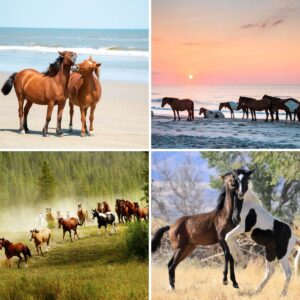

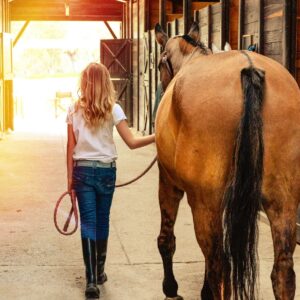
Leave a Reply